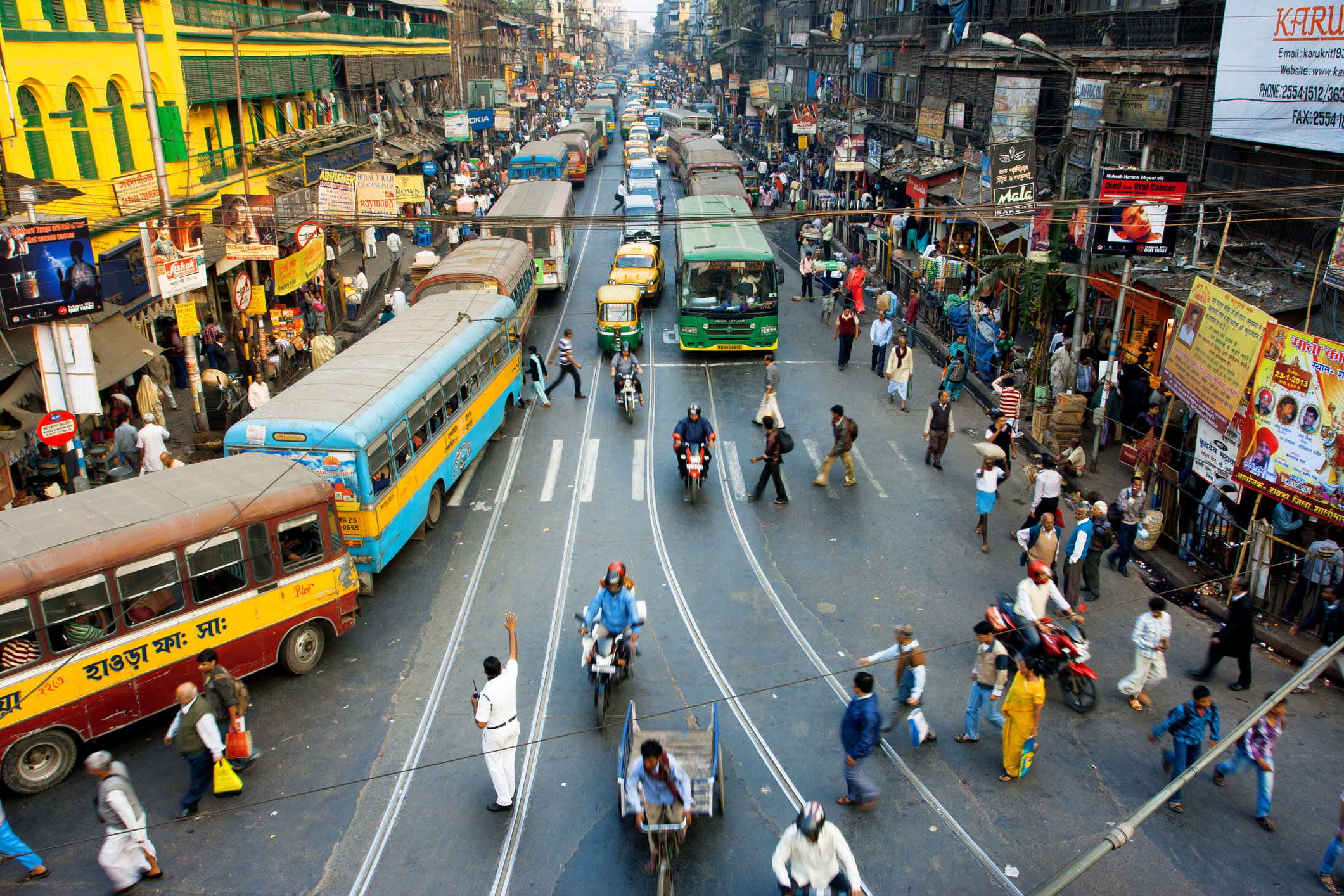This week, I spoke at two different conferences in Nashville, one on Tuesday morning and the other on Thursday. It was essentially the same presentation. I told the same jokes and spewed the same data. The only real difference between the two was I felt like a rock star on Tuesday and Ben Stein (the teacher in Ferris Bueller’s Day Off) on Thursday.
Regardless, I met a really nice guy from Chicago who attended both of them. Somehow, we got to talking about his business travels to India, mostly Mumbai, and how different the business culture is. More specifically, how much potential there is and, unfortunately, how you have to bribe every petty bureaucrat to get anything done.
When I suggested how frustrating that must be, he said: “It is the cost of doing business over there. Everyone knows it and plans for it. They simply don’t pay their civil servants enough to maintain a decent lifestyle in their expensive cities.”
Obviously, that last sentence is relative. Maintaining a decent lifestyle in Mumbai will be different than it is in Chicago or Addis Ababa or Fort Payne, Alabama. However, I think it fair to say access to personal transportation would be high on the list of anyone aspiring to maintain a decent, or even privileged, lifestyle in most metro areas on the planet.
No, it doesn’t have to be a luxury vehicle or even your own. Just a way to get from here to there without always having to jostle with the maddening crowds. Basically, some form of conveyance, at your command, which provides a measure of flexibility and independence.
While I could be wrong, I imagine a lot those underpaid civil servants in India would love a car. To be sure, traffic in Mumbai, Kolkata, Delhi and other teeming cities is a nightmare. Further, India, arguably, doesn’t have the road infrastructure, let alone space, to foster a car culture like we have in the United States. However, a car represents freedom, and freedom can be a status symbol on its own.
Consider this. According to visualcapitalist.com, there are 33 vehicles per 1,000 people in India. That’s roughly 1 in 30. While it is extremely unlikely it will ever reach the 860 per 1,000 we have in the U.S., think about the potential for growth over there.
What if India had the same vehicle ratio as, say, South Africa or Brazil – two other BRICS countries? The number is 176 per 1,000 in the former and 214 in the latter. Trust me, the numbers are going to get fun in a hurry.
Worldometers.com estimates India’s population to be 1,428,627,663, although no one will ever know for sure. That is mind-boggling, isn’t it? All those people living in, near and on top of each other. Borrowing from Crocodile Dundee, India must be the friendliest place on earth.
In any event, here is the math:
- In order for India to have the same number of vehicles, per capita, as South Africa, it would need an additional 204 million, roughly. That is almost as many as the entire population (as in people) of Brazil.
- Speaking of which, in order to have the same number of vehicles per capita as that country, India would need an additional 259 million vehicles.
That is staggering, is it not? But so what?
Well, do you think all of these aspiring car owners in India would be driving expensive EVs? All the more understanding that India’s electrical grid couldn’t handle it if they were. To be sure, some would. Or do you think the majority would opt for small, cheap and efficient internal-combustion engine options? You know, 3-cylinder cars like the Tata Altroz.
I would be willing to bet a number of rupees on that.
If v3cars.com is to be believed, and I have no reason to think it shouldn’t, the Altroz gets 19.33 kmpl. This works out to be roughly 45.47 mpg.
- If the average car owner drives 25 miles per day, on average, they would need to purchase roughly 200 gallons of gasoline, or petrol if you prefer, each year. That isn’t terribly much by American standards. However, 200 multiplied by 204 million is 40.8 billion.
- If you assume you can squeeze 40 gallons of gas out of a barrel of crude oil, close enough for today’s newsletter, India will need, obviously, an additional 1.02 billion gallons of crude annually. That works out to be 2.8 million per day, just to get to South African standards.
- To get to Brazil’s, India would need an additional 3.5 million barrels of oil per day.
For grins, to get to Mexico’s level, 358 cars per 1,000, would require, get this, around 6.4 million more barrels of crude oil per day. Just for India to get to Mexico’s level of vehicle ownership while driving 3-cylinder cars.
Going Electric
Further, just in case you were wondering, using the specs of the Altroz EV, India would have to generate an additional 258.5Tkwh of electricity just to charge the 204 million vehicles to get to South African standards. This is about 15% more from current levels in a country where coal, the dirty stuff, is responsible for roughly 74% of all electricity production. However, since the Altroz EV will likely cost in excess of 2x an entry level gasoline powered one, I think the electric grid is safe for now.
Hey, this is just one country, albeit a large one. However, other densely and heavily populated places would love to get to South Africa’s level of car ownership. For instance, in Nigeria, there are 55 vehicles per 1,000 people. The number is 64 per 1,000 in Egypt; 20 per 1,000 in Pakistan; 38 per 1,000 in the Philippines; 50 per 1,000 in Vietnam and 78 per 1,000 in Indonesia.
All of this has a point.
Vast numbers of people around the world aspire to have luxuries which we consider necessities in the United States. Three-cylinder automobiles would sell like lead communion wafers in this country. But in India? Almost all of Africa? The Stans? Much of Latin America? Southeast Asia? Let alone things like air conditioning, kitchen appliances, central heat, etc.
All of these things use energy.
- The more people who have them, the more energy we need to generate.
- The more energy we need to generate, the more resources will we need to use.
- The more resources we need to use, the more environmental damage we will do to the planet.
After all, Americans account for only 4% of the world’s total population, and a lot of people aspire to our levels of material comfort. Shoot, many would be satisfied with a fraction of what we take for granted.
This means, drum roll please, no matter what we do here in the United States, the global economy will continue to extract a lot of fossil fuels out of the earth.
I don’t see any way around this, as the entire Global South becomes wealthier and demands greater creature comforts. As such, I feel increasingly comfortable, not that I didn’t already, with our relative overweight to energy in our primary investment strategies.
You know, it is funny how a conversation with a new friend about bribing officials in India leads to almost 1,400 words about the Indian auto industry and our take on energy. I guess I really am more like Ben Stein than a rock star.
Have a great weekend.
Thank you for your continued support. As always, I hope this newsletter finds you and your family well. May your blessings outweigh your sorrows on this any every day. Also, please be sure to tune into our podcast, Trading Perspectives, which is available on every platform.

John Norris
Chief Economist
Please note, nothing in this newsletter should be considered or otherwise construed as an offer to buy or sell investment services or securities of any type. Any individual action you might take from reading this newsletter is at your own risk. My opinion, as well as those of our Investment Committee, is subject to change without notice. Finally, the opinions expressed herein are not necessarily those of the rest of the associates and/or shareholders of Oakworth Capital Bank or the official position of the company itself.



